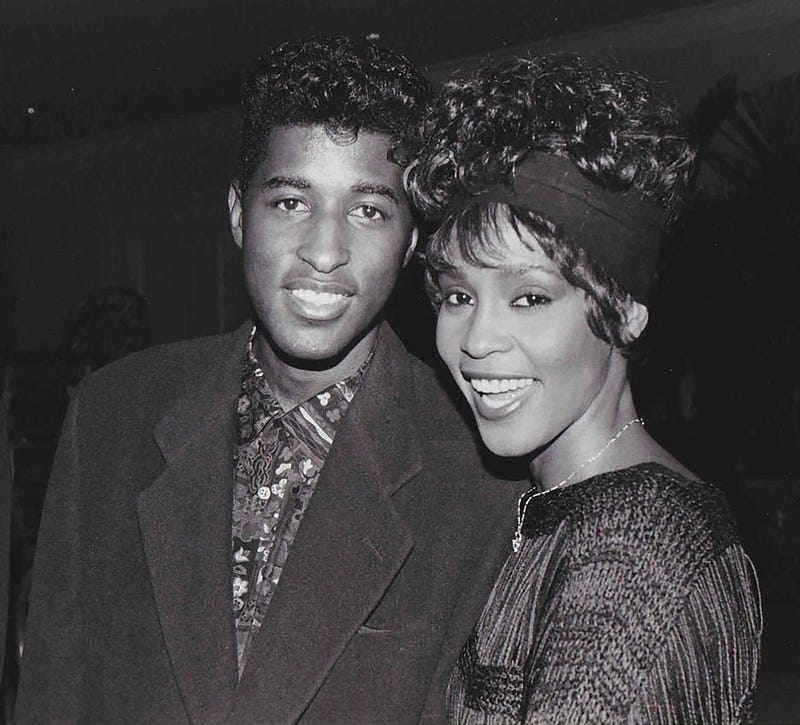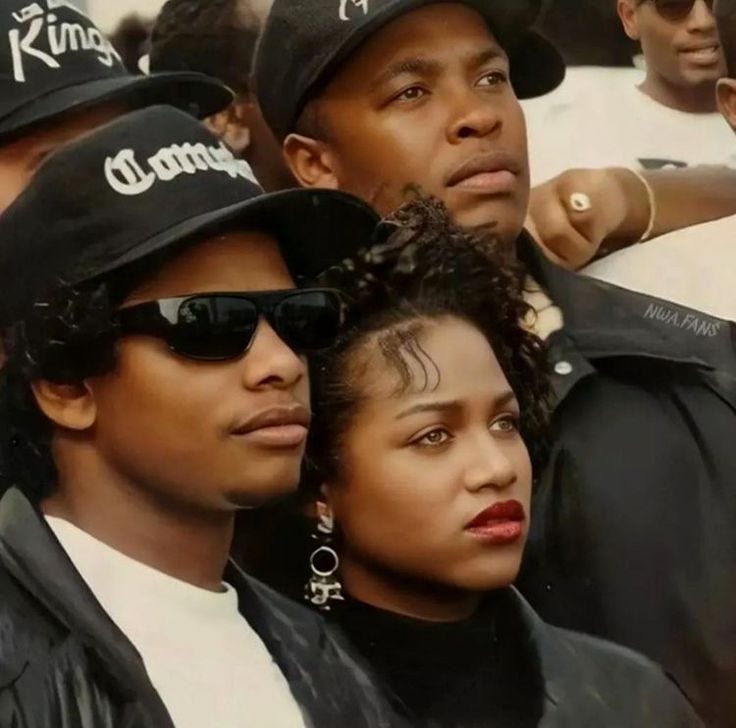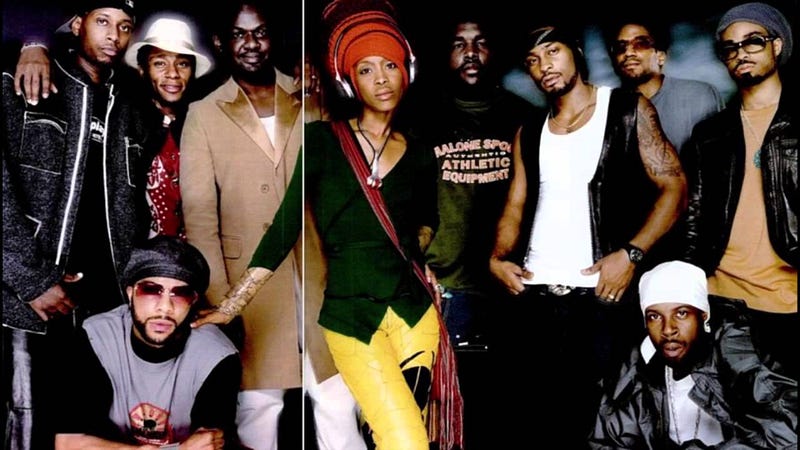Quiet Storm: Tracing the Body and Soul of R&B
Discussing the rise and fall of the smooth romance era of R&B music

Sultry saxophones simmer over velvety baselines. Candlelit vocals caress shadowy silhouettes swaying in embrace. Mood music for romance: the aesthetic essence of Quiet Storm. This soothing blend of R&B, pop, soul and jazz grew from late night “slow jam” radio formats in the 1970s into a mainstream force through the 80s. But Quiet Storm’s gentle musical seduction eventually faded into the background as hip hop’s brazen beats seized center stage.
What’s Quiet Storm?
The term Quiet Storm itself traces back to Smokey Robinson’s 1975 album of the same name. But it was Melvin Lindsey, an intern at Howard University’s WHUR 96.3 FM, who pioneered this musical style as a radio format in 1976. Playing downtempo R&B ballads back-to-back for amorous listeners, Lindsey’s late night soundscapes brought slow-jam serenades mainstream.
Lindsey’s programming of uninterrupted moody, slow tempo soul and R&B music was an instant success with listeners. The format was simple and took on the structure of what rock stations had done for years of long stretches of uninterrupted music. Lindsey would only occasionally intervening with soft-spoken alter ego to guide listeners along.
Quiet Storm is a subgenere of R&B, but it’s often been difficult to categorize. Broadly, it fuses soul, R&B, pop and jazz into a lush, romantic sound. Music writer Eric Harvey described Quiet Storm as appropriating R&B “slow jams” into sophisticated rotations with musical peers and influences.
In the early years, sultry bedroom toons filled the Quiet Storm airways. Songs like Marvin Gaye’s Distant Lover, Heatwave’s Always and Forever, and The Stylistics’ You Make Me Feel Brand New. The O’Jays’ 1978 song Use Ta Be My Girl even became a Quiet Storm staple. Although, Smokey Robinson coined the name, and 1970s classics like Marvin Gaye defined Quiet Storm’s sensual mood, the genre exploded in mainstream popularity in the 1980s.
The Peak of Quiet Storm

Luther Vandross
Anchoring this era was Luther Vandross, whose soaring, velvety voice brought technical mastery and emotional complexity to love ballads. As critic Stephen Holden wrote, Vandross “glides” through melodic climaxes, wringing out a phrase’s feeling rather than belting (Holden, 1982). Known as the “Velvet Voice,” Vandross has been recognized as one of the 200 greatest singers of all time per 2023 Rolling Stone, as well as one of the greatest R&B artists by Billboard. Vandross had a singular gift for creating an intimate, romantic vibe. For years, his seductive ballads were the go-to choice for setting the mood.
His voice was able to capture the sensuality of a man while speaking to the vulnerability of a woman. Many attribute this quality to his influences all being women: Dionne Warwick, Diana Ross, and Aretha Franklin. Though some coined him the King of the Bedroom, Vandross never liked that name and believed he sung about the connection between two people that surpasses just sex. Bass player and friend Marcus Miller suggested that the passion and intensity Vandross puts into his songs stems from his personal life: “The one thing he wanted so much and sang about so well is the one thing that he really didn’t get himself.”
Anita Baker
The Queen of Quiet Storm spot was still unfulfilled until Anita Baker arrived in 83’ offering a much-needed feminine perspective. Where Vandross channeled various Queens of music, Baker channeled the everyday woman explored romance on her own uncompromising terms through hits like Sweet Love, No One In the World, and Caught Up In The Rapture.
Weaving nimble jazz scats between breathy declarations, Baker gave women something to unwind to after a day’s work. Her sophomore album Rapture is a case study in Quiet Storm sonics — jazz piano chords glisten under thick bass grooves as her contralto seduces with spine-tingling control. Beyond the charts, Baker set the feminine glamour standard donning cropped curls other women raced to replicate. However, Baker wasn’t the only contralto voice pioneering this era.
Sade
Sade Adu brought a modern edge with her band’s 1984 debut Diamond Life. Blending smooth jazz, soul, and birthing a new genre, sophisti-pop, Sade ushered an air of worldly sonic sophistication into R&B. After departing from Pride — a British band — in 1983, Sade, Paul Denman, Stuart Matthewman, and Paul Anthony Cook formed the Sade band. Smooth Operator would be their breakthrough hit: a song which flipped the script on womanizing men, especially the ones dominating Quiet Storm, with a bold, empowered point of view.
Diamond Life would take Quiet Storm to new heights with its crossover appeal, and overall transform the music industry. The band would sustain this momentum with their 1985 Promise album, spawning their second consecutive number-one single on the Billboard Adult Contemporary chart. The success of these projects paved the way not only for winning Best New Artist at the 1986 Grammys, but also for the ascent of alternative British R&B artists on the global stage.
The Controversy & Decline of Quiet Storm

Quiet Storm was not embraced by all. As it rose in the late 1970s and early 1980s, some criticized its lack of political commentary and disconnect from black urban life. Author Mark Anthony noted these songs “were in most cases devoid of any significant political commentary and maintained a strict aesthetic and narrative distance from issues relating to black urban life” (as quoted in Harvey, 2012). While social activism in music persisted since the 1960s, Quiet Storm was still accused of apolitical disengagement.
However, critic Eric Weisbard felt Quiet Storm “stood for an inviolate realm of black pop memory and cultural stability,” no less community-centric than the Isley Brothers’ Fight the Power” (as quoted in Harvey, 2012). The debate illustrated the genre’s divisiveness.
Though some criticized its apolitical tone, this did not curb Quiet Storm’s iconic run. As the decade progressed to the mid-late 1980s, Quiet Storm started to decline. However, just as Sade was becoming popular, the genre started facing some backlash. As the genre became more mainstream, intensifying accusations of it straying from its cultural origin plagued it. Smith would go on to claim that romance songs “became more wholesome as Quiet Storm materialized as the black answer to adult contemporary.” Rising artist Whitney Houston, for example, producing pop-inflected Quiet Storm ballads such as her 1985 Saving All My Love for You and Two Occasions by The Deele reinforced this commercialized shift. o some, the genre built by and for the black community was now betraying its identity to court white listeners.
Simultaneously, subgenres like synthpop, soft rock and new wave grew trendy, enticing R&B labels. Veteran Quiet Storm artists adapted techniques from these sounds, diluting their stylistic hallmarks. Charlie Wilson ventured into electro, synthpop through 1986’s Computer Love, deviating from preceding Gap Band Quiet Storm ballads such as Yearning For Your Love. As the decade progressed, pioneering Quiet Storm struggled to compete amidst diversifying tastes. Electro productions like Hangin’ on a String (Contemplating) by Loose Ends, Be Your Man by Jesse Johnson, and soft rock productions like We Don’t Need Another Hero (Thunderdome) by Tina Turner revealed genre lines blurring. While evolution is inevitable, Quiet Storm traditionalists sensed the genre fading.
Hip Hop Takeover

As music transitioned into the late 80s, New Jack Swing ultimately captured mainstream momentum. Upbeat blends like Al B. Sure’s Nite and Day and Michel’le’s Something In My Heart fused Quiet Storm lushness with New Jack Swing’s flare. LaFace Records, an architect of New Jack Swing, still harbored traditionalists like early signee Toni Braxton, whose ballads channeled Anita Baker. As the decade closed, even pop and R&B royalty like Michael Jackson and Whitney Houston adapted their sounds to mesh R&B, pop and hip-hop trends through records like Jackson’s Dangerous and Houston’s I’m Your Baby Tonight. This homogenization eventually turning into “hip hop soul” marked a new generation less defined by genres as by fluid fusion.
However, subtler Quiet Storm influence persisted through artists like Janet Jackson, who modernized its moody aesthetic into sultrier contemporary R&B songs like 1987’s Funny How Time Flies. New vanguards like Mariah Carey, Toni Braxton and Boyz II Men emerged blending Quiet Storm into the 90s contemporary R&B balladry. Meanwhile, as hip-hop exploded in popularity among youth audiences, black radio responded by splitting into two formats. “Urban Mainstream” radio stations emerged, playing a blend of rap and R&B music targeting the 18 to 34 demographic and “Urban Adult Contemporary” maintained Quiet Storm’s legacy playing primarily R&B for fans aged 25 to 54.
1992 saw the passing of radio pioneer Melvin Lindsey following his battle with AIDS. Lindsey, who cultivated legions of dedicated fans during his WHUR 96.3 FM tenure, gave his final broadcast speaking to callers from his hospital bed. To many, Lindsey’s death marked the conclusion of an inimitable musical era he helped spark through the sultry allure of Quiet Storm’s sonic aesthetic. The intimacy and emotional potency of those candlelit soul ballads persists through the genre’s legacy.
The Neo-Soul Movement

The final nail in the coffin for Quiet Storm was through the arrival of neo-soul — a fitting bookend given Sade’s pioneering sophisti-pop role. As the 90s progressed, mainstream R&B increasingly favored romanticized hip hop beats over live bands, diluting the jazz and funk instrumentation that defined earlier soul music. Though slower in tempo, hip hop “slow jams” lacked the lush, acoustic soundscapes of Quiet Storm.
In response, neo-soul arose as a revival movement, aiming to restore organic grooves and musical depth to R&B. Channeling Quiet Storm’s conceptual ethos, neo-soul fused jazz, funk, and conscious songwriting back into soul. Like rediscovering an old familiar refrain, the movement hit an eager nostalgic chord.
Late 90s/early 2000s neo-soul tapped the vein of lush intimacy through icons like D’Angelo’s sultry Untitled (How Does It Feel), Erykah Badu’s Next Lifetime, and Maxwell’s This Woman’s Work. The resonance of acoustic basslines, muted trumpets and soulful harmonies brought Quiet Storm’s aesthetic back in vogue. What once filled dimly-lit rooms had found its next incarnation — nostalgic yet forward-reaching through neo-soul.
The Legacy of Quiet Storm

Quiet Storm radio still continued and is still present today. However, streaming and social media platforms like TikTok have opened a door for fans to access or discover this music outside of radio. Quiet Storm has also become an oldie but goodie genre that people clean their homes to, cook, and do other activities to. However, this beautiful genre isn’t simply background noise for Gen Z. Its influence lives on through artists like Tone Smith, Sabrina Claudio, H.E.R., Devin Morrison, and DVSN. Apple Music playlists such as “Mood,” “Pillow Talk,” and “Smooth and Easy” carry on the traditional Quiet Storm radio format of uninterrupted moody, slow tempo soul and R&B music.
While no longer at the forefront, Quiet Storm retains devotees through specialized radio segments and curated playlists reaching new generations. The alluring musical experience that pioneers like Luther Vandross and Anita Baker cultivated continues attracting listeners craving candlelit intimacy. Quiet Storm’s subtly powerful aesthetic persists by passing its spirit forward.
Thank you for reading! If you enjoyed this analysis, please like, share or leave a comment with your thoughts. I’d love to continue the conversation. And if you want more in-depth pop culture analysis, be sure to subscribe!






